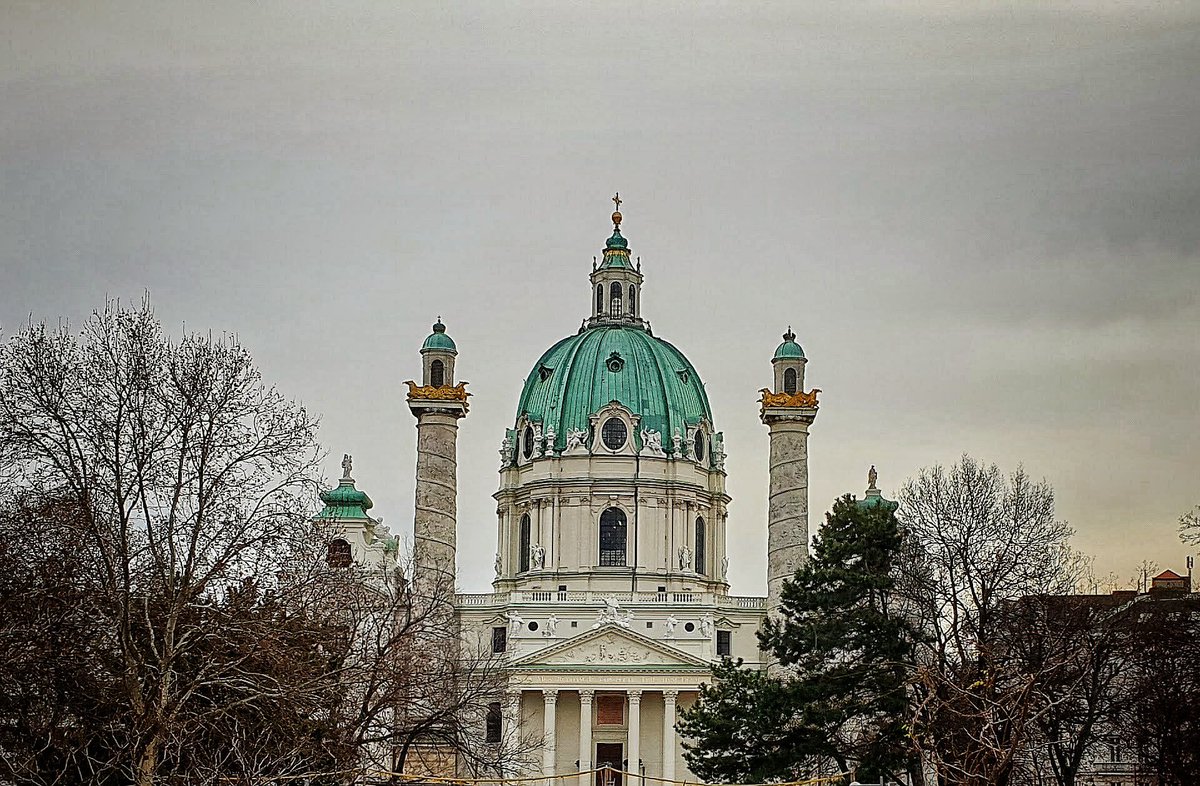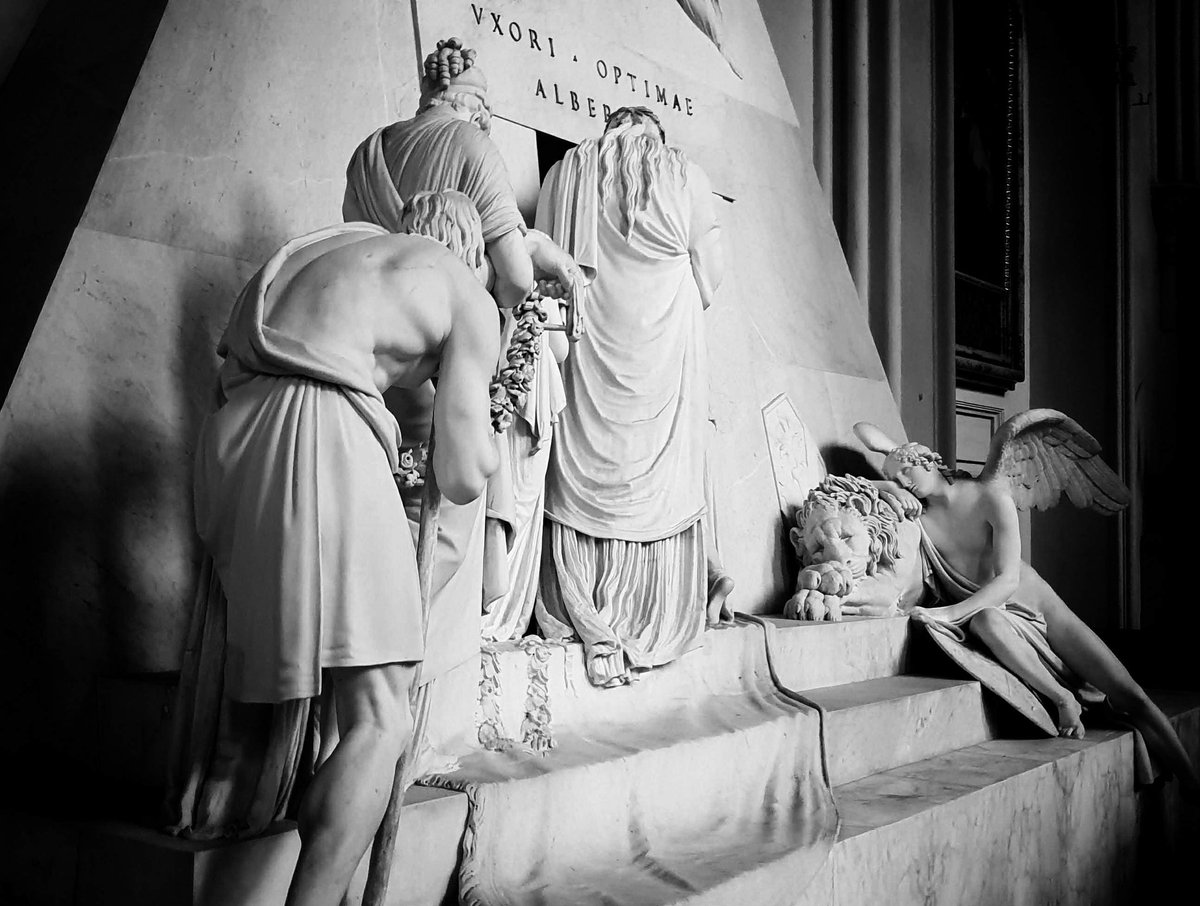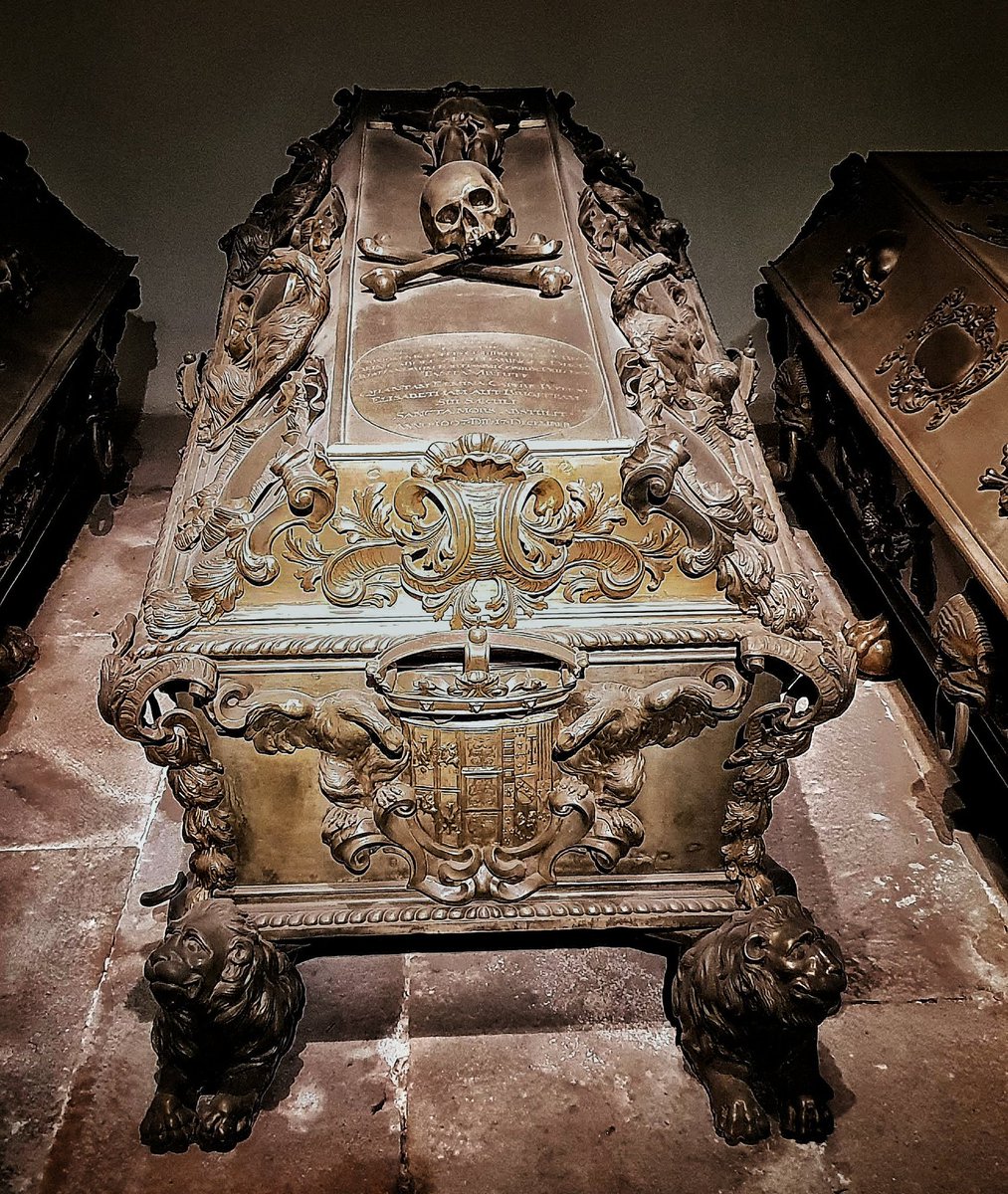So, well, I'm not *all* about yelling about the Far Right, and Lord knows, we could all use a cheer up, so why don't you follow me around Vienna for a day? Get out the cheese and crackers, it's time for my holiday snaps! Yeah! 

Our first day in Vienna found us in an @Airbnb, notable for the tiny white flecks of leather peeling off the bd headboard, dodgy wiring and the fragrant waft of decades old tobacco. All part of the charm, though, right? 

We had a full day of sightseeing ahead of us, but I want to highlight the chapel we'd walk past on the way to the U-Bahn.
Built in the 18th century, it's the only of 20 left that used to circle the city.
Note: If you're allergic to statues of intense saints, don't come here.


Built in the 18th century, it's the only of 20 left that used to circle the city.
Note: If you're allergic to statues of intense saints, don't come here.



Our first stop was gonna be the Karlskirche, the baroque masterpiece built by Charles VI as thanks for not dying messily of the plague in 1713.
However, they wanted a truly toe-curling amount of money to go in, so let's just admire the architecture, shall we?
However, they wanted a truly toe-curling amount of money to go in, so let's just admire the architecture, shall we?

I was being a cranky man-child by this stage, so we ducked into the Cafe Schwarzenberg, so I could get my fix of frou-frou coffee.
Cafe Schwarzenberg was frequented by the business elite in the 19th century, and looks it, despite the odd bullet-hole care of our Soviet pals.
Cafe Schwarzenberg was frequented by the business elite in the 19th century, and looks it, despite the odd bullet-hole care of our Soviet pals.

I necked a couple of Franziskaners - espresso with milk foam and a great lumpen wodge of cream on top - like a cappuccino on 'roids.
A few of those and you're good for the day, if you can surf the caffeine psychosis.
A few of those and you're good for the day, if you can surf the caffeine psychosis.

Next stop was the Augustinerkirche - the Augustinian Church that once part of a monastery. There's still a few monks lurking.
It's also where Habsburgs had their hearts stored (post-mortem) in a side chapel. Unfortunately, the chapel was closed.
No shrivelled hearts for Mikey.
It's also where Habsburgs had their hearts stored (post-mortem) in a side chapel. Unfortunately, the chapel was closed.
No shrivelled hearts for Mikey.

One thing you have to check out in the Augustinerkirche is the cenotaph to Maria Christina, Marie Antoinette's sister, who died in 1798.
What they don't tell you about is the sizzling lesbian fling she had with Isabella of Parma, her sis-in-law. Funny that.



What they don't tell you about is the sizzling lesbian fling she had with Isabella of Parma, her sis-in-law. Funny that.




Across the road from the Augustinerkirche is the 'Hungarian House'.
Historical record tells us that this used to be the winter home of Erzebet Bathory - you may have heard of her!
Legend states that monks from the monastery used to throw pots at the house to stop the screams...
Historical record tells us that this used to be the winter home of Erzebet Bathory - you may have heard of her!
Legend states that monks from the monastery used to throw pots at the house to stop the screams...

The one thing I really wanted to see on this particular day was the 'Kaisergruft', or Imperial Crypt.
Most of the Habsburgs since the early 17th century have been buried here in caskets, sans heart & guts. That's a deeply Austrian thing to do, btw, spread your dead bits.
Most of the Habsburgs since the early 17th century have been buried here in caskets, sans heart & guts. That's a deeply Austrian thing to do, btw, spread your dead bits.

There's forty odd Habsburgs in the Imperial Crypt, and people come to see the ridiculously ornate (and grim) baroque caskets from the late 17th and early 18th centuries.
The biggest casket belongs to Maria Theresa, the Holy Roman Empress who restored the country's fortunes.



The biggest casket belongs to Maria Theresa, the Holy Roman Empress who restored the country's fortunes.




Two other caskets of note in the Imperial Crypt are of Empress 'Sisi', who occupies a kind of 'Princess Di' spot in the German-speaking world after her assassination, and that of her son, Crown Prince Rudolph, who put a bullet through his head (and his GF) at Mayerling in 1889. 



Our final stop for the day was the cathedral, the Stephansdom, built in the 14th century & dedicated to St Stephen.
It's truly the heart of the city and incorporates Roman bricks and stonework into its construction.



It's truly the heart of the city and incorporates Roman bricks and stonework into its construction.




The interior of the Stephansdom must be one of the most beautiful Gothic spaces I've ever been in my life, and is absolutely crammed with treasures. Unfortunately, most of it was shut off unless you paid, well, rather a lot - and had no card readers.
Anyway - astounding!


Anyway - astounding!



If you do visit the Stephansdom, do keep an eye out for this fella. That's Anton Pilgram (1460 - 1516) one of the chief architects of the cathedral.
I like to think this is him 'signing' his work.
I like to think this is him 'signing' his work.

On the way out, if you're visiting the Stephansdom, also check out these metal bars embedded in the wall. They were used by medieval merchants to measure cloth, and ensure that nobody was getting cheated. 

This all done, I went and ate a schnitzel the size of my (large) head, because I'd walked quite a distance.
...and that was just the first day!
If there's any interest whatsoever, I'll do the other two over the coming days.
Thanks for joining in! /FIN
...and that was just the first day!
If there's any interest whatsoever, I'll do the other two over the coming days.
Thanks for joining in! /FIN
• • •
Missing some Tweet in this thread? You can try to
force a refresh



























